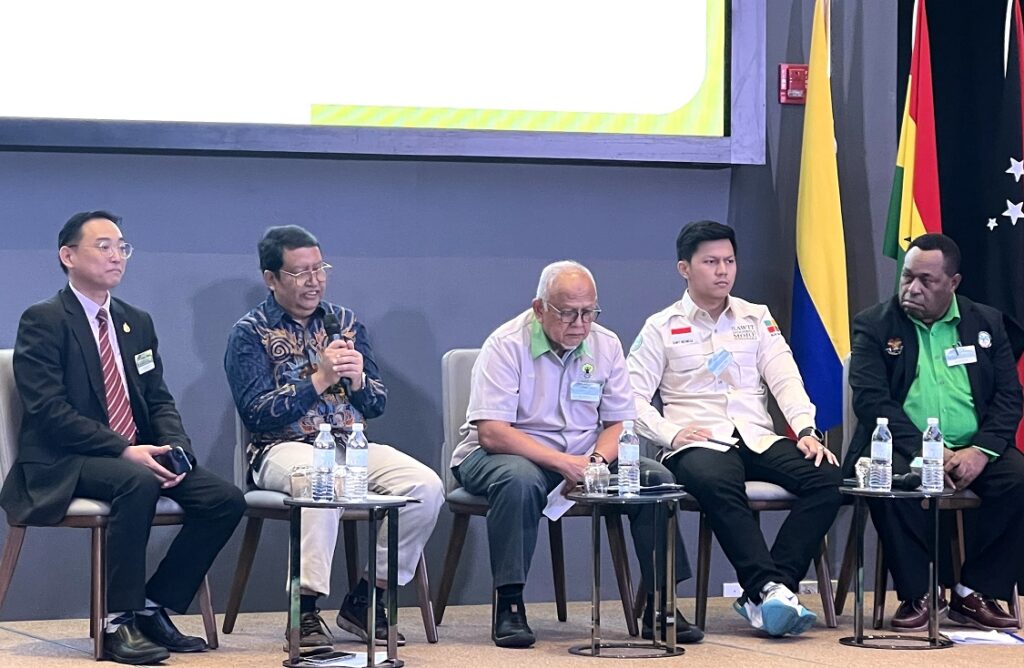Melaka, Malaysia, Monday, July 24, 2023 – The Marape Government has ambitious plans to escalate palm oil production through enhanced collaboration and equity participation of all stakeholders in the palm oil industry, according to Oil Palm Industry Corporation (OPIC) General Secretary, Kepson Pupita. He made this announcement during his address at the Council of Palm Oil Producing Countries (CPOPC) International Smallholders Workshop held in Melaka, Malaysia.The Papua New Guinea Medium Term Development Plan (MTDP) IV 2023-2027 spearheads this initiative, aimed at fostering sustainable growth and development
Founded in 2015 by Indonesia and Malaysia, the CPOPC is an intergovernmental organisation dedicated to promoting the responsible and global use of palm oil. As the world’s leading producers, contributing to 90 percent of global palm oil output, Indonesia and Malaysia initiated the establishment of independent palm oil sustainability standards. CPOPC’s mission includes harmonising these sustainability standards between the two countries.
Papua New Guinea received an invitation to participate in the CPOPC following a recent visit by Indonesian President, H.E. Joko Widodo. During his meeting with Prime Minister Hon. James Marape, President Widodo extended an invitation for PNG to increase its palm oil production and export to Indonesia.
By 2027, Papua New Guinea envisions achieving the following targets:
• Increase palm oil export value to US$ 1.594 billion (K5.313 billion);
• Raise crude palm oil (CPO) export volume by 1.3 million tonnes;
• Expand oil palm planting by 200,000 hectares;
• Engage 50,000 households in cultivating oil palm; and
• Enhance rural income and self-employment opportunities, leading to improved livelihoods.

“Palm oil serves as a vital agricultural export for PNG, generating an average of US$510 million (K1.7 billion) in export revenue per year from 2018 to 2022,” stated Pupita.
“Over the last three decades, palm oil has contributed significantly to the nation’s economy, amounting to US$7.2 billion (K24 billion) in export revenue.
“To achieve the projected increase in production, Papua New Guinea aims to involve more smallholder growers in the industry. At present, companies account for 66.5 percent of the total planted area, covering 133,854 hectares, while landowners hold the remaining 33.5 percent on 67,610 hectares, summing up to a total of 201,464 hectares. Surprisingly, this constitutes only 4 percent of the total moderate-highly suitable areas for oil palm cultivation in PNG.”

Pupita emphasised, “Incorporating new development areas into the current project areas managed by OPIC and milling companies’ estates would lead to an increase in the total planted area, reaching up to 250,000 hectares.”
“The smallholder segment plays a significant role, with 21,126 smallholder blocks under three distinct schemes: Land Settlement Scheme (LSS), Village Oil Palm (VOP), and Customary Rights Purchase (CRP). Currently, smallholders have cultivated 67,610 hectares of oil palm under these schemes.
“The Marape Government’s commitment to promoting sustainable palm oil production, with the active engagement of all stakeholders, is poised to drive economic growth and prosperity for Papua New Guinea while ensuring environmental responsibility and social welfare.”
******
![]()
